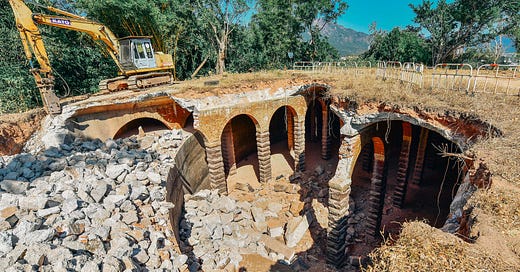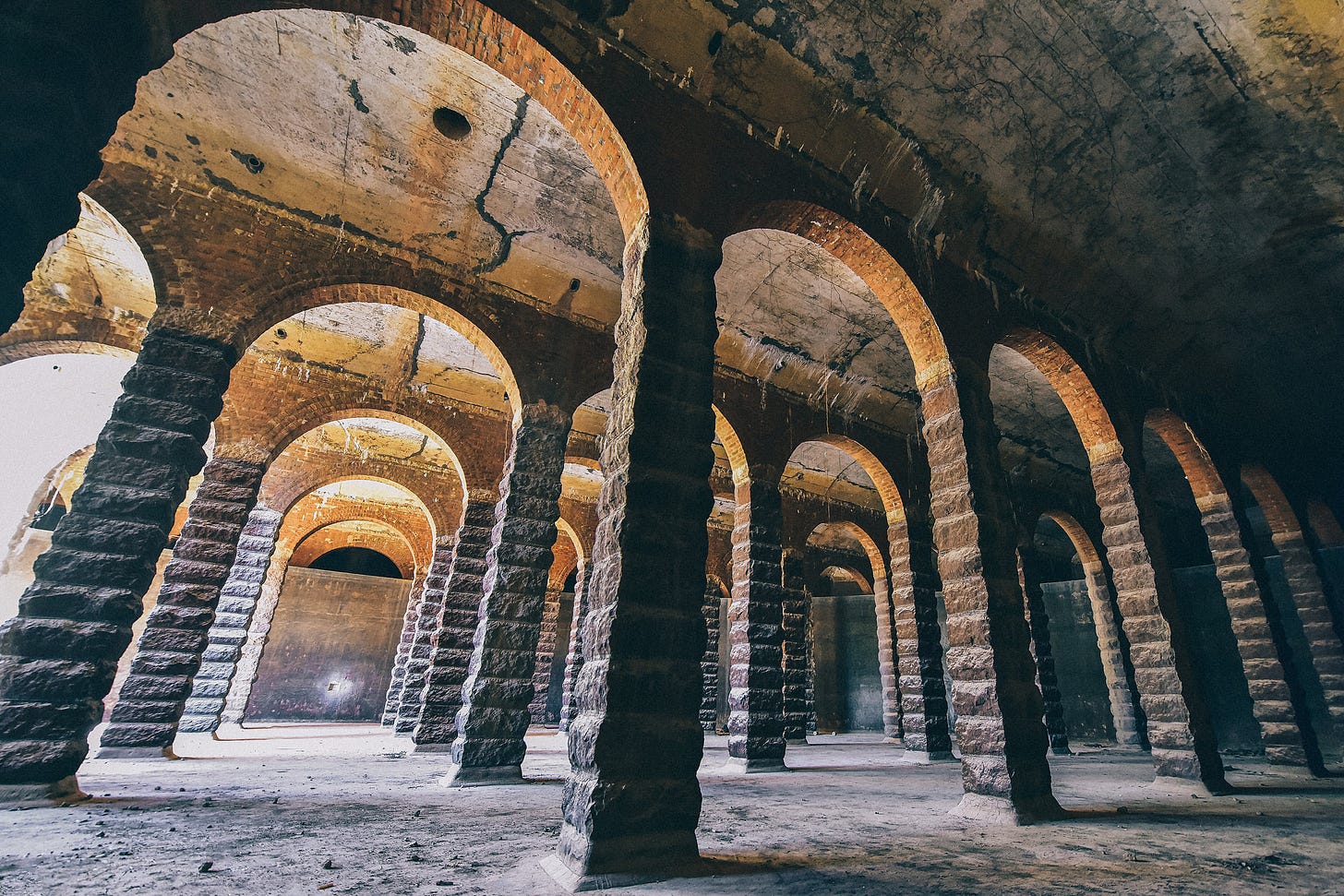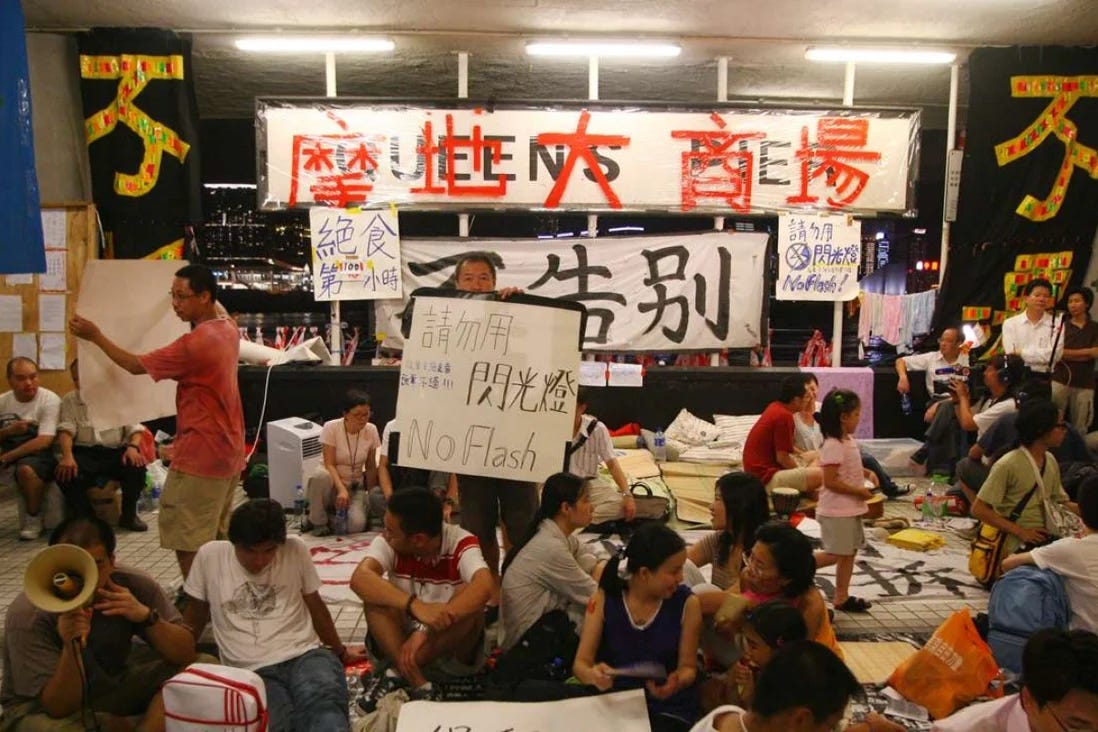Before the bulldozers: The last-ditch efforts to save Hong Kong’s heritage
A human rights-based approach to heritage conservation would slow the disappearance of historic structures that tell the stories of the city of Hong Kong.
This briefing is by Dorothy Kwok (DK), a graduate student at the Max Bell School of Public Policy where she serves as the Director of Mental Health and Well-being for the Public Policy Association of Graduate Students (PPAGS). Dorothy is from Hong Kong and passionate about exploring policy innovation for sustainable urban development. Write us at newsletterthebell@gmail.com
I GREW UP IN A NEIGHBOURHOOD IN HONG KONG close to a place called Bishop Hill. I used to play there with my sister, pretending we were archaeologists, using our badminton rackets as metal detectors on the hillside. Later, as a teenager, I ran up Bishop Hill as part of my workout regimen.
Little did I know, there was a historic treasure beneath my feet. I woke up in Montreal one morning in December and was shocked by the news on social media. A century-old Romanesque underground reservoir with 100 pillars, beneath Bishop Hill, was about to be destroyed.
The public of Hong Kong knew nothing about the cistern, much less about the government’s plan to demolish it, until its images started piling up on social media. The proposal was to knock down the structure and backfill the hole for future development.
Bishop Hill’s reservoir was built in 1904 to increase the water supply reliability of the district. It continued operating until the 1970s when it was rendered obsolete by more modern storage tanks. Yet, the origin of its Romanesque construction style still remains inexplicable. The underground treasure was left there, behind the fence with prohibiting signs, hidden from the general public as if it were nonexistent. In fact, a district council meeting in 2017 described the reservoir as an ordinary water tank with structural problems, and therefore its demolition started last year.
It was a local resident who discovered the reservoir and then stood stubbornly in front of a bulldozer. The cistern was saved only after the Internet was flooded with its photos and the public furor opposing its demolition.
The government’s Antiquities and Monuments Office later apologized for overlooking the reservoir as a historic site. The Office is preparing a proposal for designating it as a heritage site and will begin public consultation this month. It expects a decision by June this year. The designating process, which usually takes a couple of years, has been compressed to six months.
The consultation is the one and only opportunity for community participation in the whole process. For other past heritage sites, consultation was conducted as a mere formality to give public information. An environmental impact assessment and the public’s decision-making power in determining heritage status were missed.
Historically, the Hong Kong government has taken a top-down approach in almost all policy issues. Heritage has long been used as a trade-off for economic development. When it comes to privately-owned heritage, the right of ownership is the strongest excuse for the government to avoid responding to public requests for conservation.
This approach has been detrimental to the fate of Hong Kong’s historic structures, many of which anchor neighbourhoods and their residents. In 2007, despite a month of public outcry against the demolition of Star Ferry Pier and Queen’s Pier, two public places where many Hong Kongers shared collective memories, the government tore them down. Officials promised to rebuild the Queen’s Pier somewhere else, but there still is no proposal.
It is time to think about adopting a human rights-based approach to make progress on deciding who designates a property’s heritage status and how the process should work. Several key global conventions have incorporated references from the International Bill of Human Rights. They increasingly view heritage designation not only as important to preserve a structure, but as a value in itself connected to the construction and preservation of cultural identities. This evolution signifies the dignity of individuals and communities, and involves their participation in heritage identification.
In Singapore, efforts have been undertaken to designate entire neighbourhoods with historic structures as Historic Conservation Areas. Core and broader communities are identified as the basis of collaboration and of shared values for developing heritage designation capacities.
Ontario was another good example of how a human rights approach can build new collective identities. The Ontario Provincial Policy Statement, which revised cultural heritage policies in 2020, mandated relationship-building and coordination between municipalities and Indigenous communities on land use planning matters.
Conversely, private owners in Hong Kong have torn down at least 37 historic structures since 2009. Unless the structures are monuments, they do not enjoy statutory protection under the Antiquities and Monument Ordinance. This code might have preserved these properties had it been updated from its 1976 enactment.
Heritage cannot be separated from questions concerning property and land rights. Approaching the concept of ownership differently through a human rights lens ensures a more equitable city development. If citizens are the ones who own the city together, rethinking the property and land rights involved in heritage re-conceives the ownership of the “collective.”
Civil society organizations are also essential for realizing human rights and “collective” ownership. They can reconcile the existing power imbalance between the authorities, the private owners, and the public in heritage designation in Hong Kong.
The Hong Kong mansion of Kung Fu legend Bruce Lee was torn down in 2019 after a decade of opposition. Bruce Lee always encouraged people to look at things from a fresh perspective, and the time has come for Hong Kong to adapt new heritage policies so other historic sites can be preserved.
Hong Kongers were fortunate to save the Bishop Hill’s reservoir from the bulldozer. Given that the proposal to reassemble the Queen’s Pier seems to have no end in sight, should I be saying goodbye to the next item on the heritage agenda? (DK)
Related: Bruce Lee’s former mansion in Hong Kong torn down to make way for Chinese studies centre.
Read: The latest on ‘Buttergate’ - how Dairy Farmers of Canada is responding to a food writer’s expose on the use of palm oil in pandemic butter production.
Listen: In “Making the Grade,” the Happiness Lab explores whether we can live a grade-free (or FitBit ranking-free) life.
Follow: AllSides, an Instagram account that provides daily side-by-side headlines from left-leaning to right-leaning media.
___
The Bell is edited by Emily Nickerson, Mariel Aramburu, and Andrew Potter of the Max Bell School of Public Policy at McGill University. If you have any feedback or would like to contribute to this newsletter, please send an email to the editors at newsletterthebell@gmail.com








